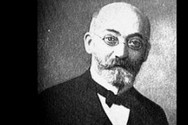Is it possible for someone to come up with a language in order to unite various language speakers around the world? That is what Esperanto was intended to do. To become a common international language so as to facilitate easier communication between individuals from different nationalities. Esperanto was created by Dr. L. L. Zamenhof in 1887 to be used as a second language. This was so as to allow individuals to retain their original languages and cultural backgrounds but still be able to remove geographical and language differences by having a common language. Dr. Zamenhof created Esperanto and made it easy to learn through it’s regular and logical design. Currently, Esperanto is the most widely spoken planned language in the world, and various books have been translated to it.
There are many advantages to learning the language. This includes the fact that it is quite easy to master due to its free rules of grammar and phonetic spelling. These rules are regularly and not sporadically applied, making it quite easy to learn the language. Also, research has shown that individuals who learn Esperanto as a second language are more likely to learn other languages much more quickly than if they had learned another language first. Esperanto also makes it easier to meet new people and become friends with them due to the common language, which facilitates easier communication. This comes in handy when you want to travel to different parts of the world. There are various organizations which can help you organize your travel and connect with other Esperanto speakers in other parts of the world.
Esperanto has a small number of vocabularies. New words are generally created by adding suffixes and prefixes to words that already exist. Other characteristics of the language is that it is a neutral language as it does not belong to any particular country or people group. The language is international as it is used as a means of communication by people who do not have a common mother tongue. The language is also dynamic as it evolves and can be applied in different situations to express various thoughts and emotions.
